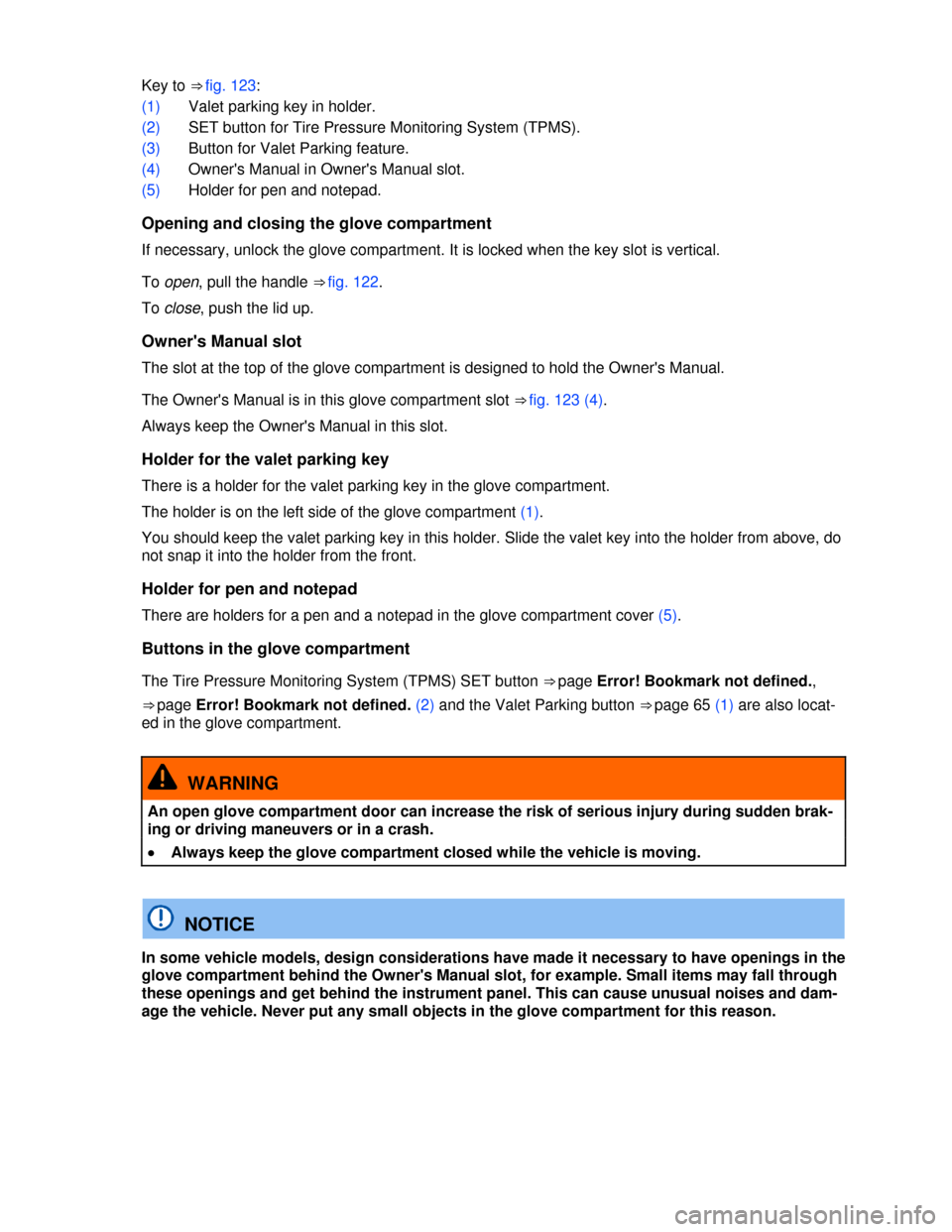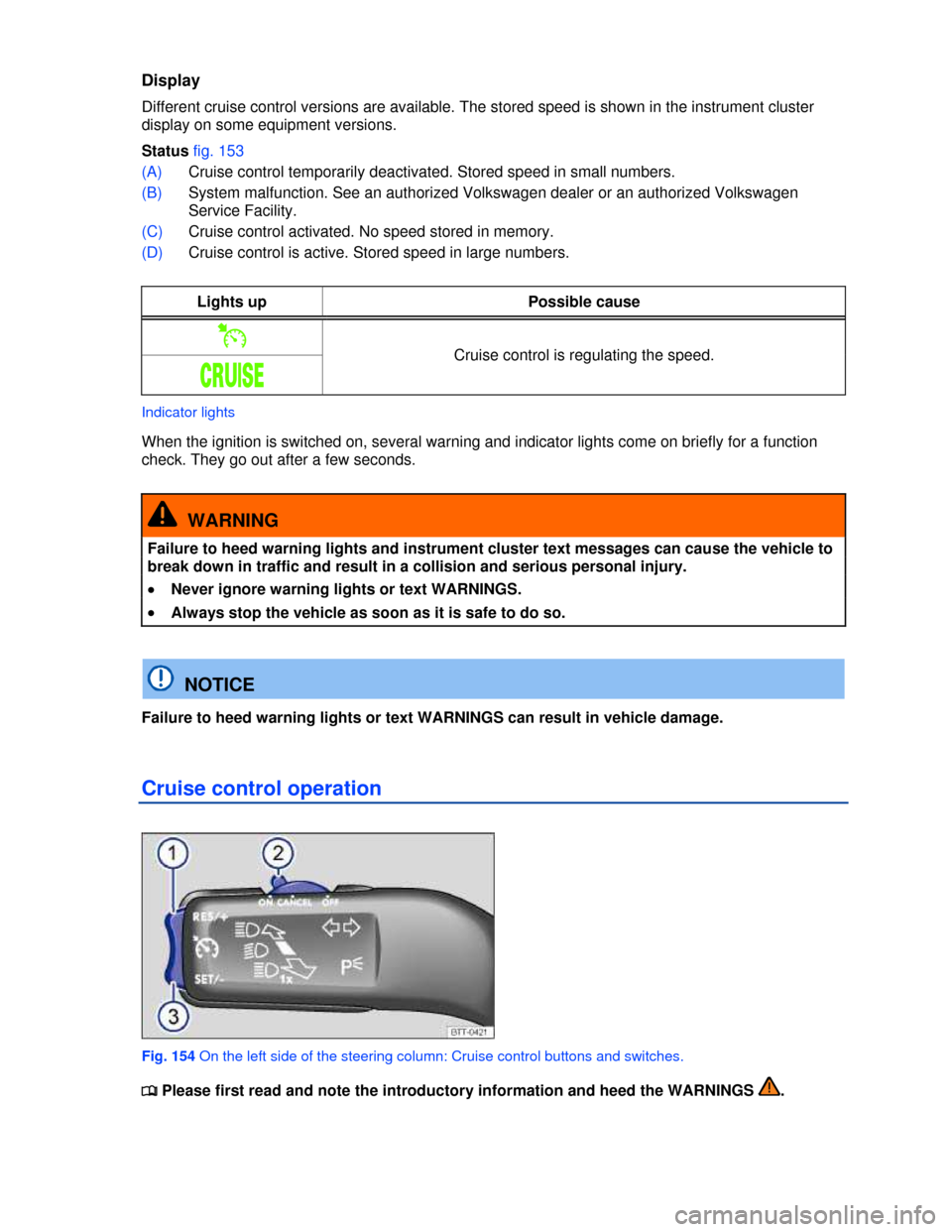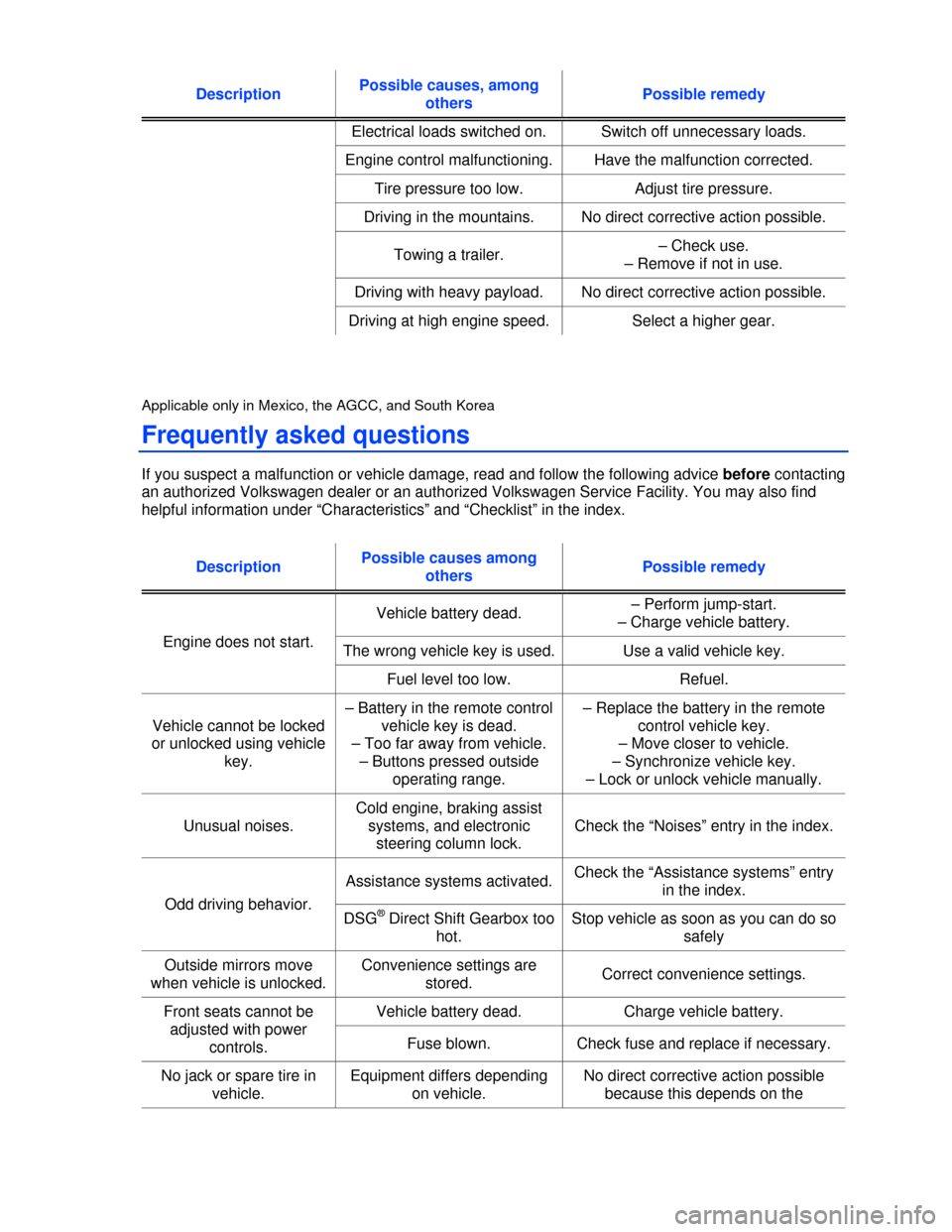2013 VOLKSWAGEN PASSAT buttons
[x] Cancel search: buttonsPage 191 of 379

Key to ⇒ fig. 123:
(1) Valet parking key in holder.
(2) SET button for Tire Pressure Monitoring System (TPMS).
(3) Button for Valet Parking feature.
(4) Owner's Manual in Owner's Manual slot.
(5) Holder for pen and notepad.
Opening and closing the glove compartment
If necessary, unlock the glove compartment. It is locked when the key slot is vertical.
To open, pull the handle ⇒ fig. 122.
To close, push the lid up.
Owner's Manual slot
The slot at the top of the glove compartment is designed to hold the Owner's Manual.
The Owner's Manual is in this glove compartment slot ⇒ fig. 123 (4).
Always keep the Owner's Manual in this slot.
Holder for the valet parking key
There is a holder for the valet parking key in the glove compartment.
The holder is on the left side of the glove compartment (1).
You should keep the valet parking key in this holder. Slide the valet key into the holder from above, do
not snap it into the holder from the front.
Holder for pen and notepad
There are holders for a pen and a notepad in the glove compartment cover (5).
Buttons in the glove compartment
The Tire Pressure Monitoring System (TPMS) SET button ⇒ page Error! Bookmark not defined.,
⇒ page Error! Bookmark not defined. (2) and the Valet Parking button ⇒ page 65 (1) are also locat-
ed in the glove compartment.
WARNING
An open glove compartment door can increase the risk of serious injury during sudden brak-
ing or driving maneuvers or in a crash.
�x Always keep the glove compartment closed while the vehicle is moving.
NOTICE
In some vehicle models, design considerations have made it necessary to have openings in the
glove compartment behind the Owner's Manual slot, for example. Small items may fall through
these openings and get behind the instrument panel. This can cause unusual noises and dam-
age the vehicle. Never put any small objects in the glove compartment for this reason.
Page 228 of 379

In order to Operation
Deactivate display by driving
forward:
Drive forward faster than about 10 mph (16 km/h).
Screen
Function buttons on the screen ⇒ fig. 150:
(1) Display or hide the menu bar.
(2) Turn off the rearview camera screen.
(3) Turn off the sound.
(4) Adjust display: brightness, contrast, color (for vehicles with navigation unit).
Special considerations
1) Do not use Rear Assist in the following situations:
– When an incorrect or unclear image is displayed, such as when there is poor visibility or the lens is
dirty.
– If the area behind the vehicle cannot be seen clearly or completely.
– If the rear of the vehicle is heavily loaded.
– When the luggage compartment lid is open.
– If the driver is not familiar with the system.
– If the position or angle of the camera has changed, such as after a rear-end collision. Have the
system checked by an authorized Volkswagen dealer or an authorized Volkswagen Service Facility.
2) Examples of optical distortion by the camera
The Rear Assist camera displays only two-dimensional images. Recesses and protruding objects on
the ground or protruding parts on other vehicles are difficult or impossible to identify due to the lack
of depth of field.
Objects or another vehicle may seem closer or farther away on the screen than they really are:
– When driving from a level surface onto an upward or downward slope.
– When driving up or down a slope onto a level surface.
– If the rear of the vehicle is heavily loaded.
– When approaching protruding objects. These objects can disappear from the field of view when
backing up.
Cleaning the camera lens
Keep the camera lens clean and free of snow and ice:
�x Engage the parking brake.
�x Switch on the ignition.
�x Select the reverse gear.
�x Wet the camera lens with a commercially available alcohol-based glass cleaner and clean with a
dry cloth ⇒ .
�x Remove snow with a brush.
�x Remove ice with deicer spray ⇒ .
Page 232 of 379

Display
Different cruise control versions are available. The stored speed is shown in the instrument cluster
display on some equipment versions.
Status fig. 153
(A) Cruise control temporarily deactivated. Stored speed in small numbers.
(B) System malfunction. See an authorized Volkswagen dealer or an authorized Volkswagen
Service Facility.
(C) Cruise control activated. No speed stored in memory.
(D) Cruise control is active. Stored speed in large numbers.
Lights up Possible cause
�% Cruise control is regulating the speed.
�#�2�5�)�3�%
Indicator lights
When the ignition is switched on, several warning and indicator lights come on briefly for a function
check. They go out after a few seconds.
WARNING
Failure to heed warning lights and instrument cluster text messages can cause the vehicle to
break down in traffic and result in a collision and serious personal injury.
�x Never ignore warning lights or text WARNINGS.
�x Always stop the vehicle as soon as it is safe to do so.
NOTICE
Failure to heed warning lights or text WARNINGS can result in vehicle damage.
Cruise control operation
Fig. 154 On the left side of the steering column: Cruise control buttons and switches.
�
Page 343 of 379

Applicable only in the United States and Canada
Frequently asked questions
If you suspect a malfunction or vehicle damage, read and follow the following advice before contacting
an authorized Volkswagen dealer or an authorized Volkswagen Service Facility. You may also find
helpful information under “Characteristics” and “Checklist” in the index.
Description Possible causes, among
others Possible remedy
Engine does not start.
Vehicle battery dead. – Perform jump-start.
– Charge vehicle battery.
The wrong vehicle key is used. Use a valid vehicle key.
Fuel level too low. Refuel.
AdBlue fill level too low. Refill AdBlue.
Vehicle cannot be locked
or unlocked using vehicle
key.
– Battery in the remote control
vehicle key dead.
– Too far away from vehicle
(out of range).
– Buttons have been pressed
too many times.
– Replace the battery in the remote
control vehicle key.
– Move closer to vehicle.
– Synchronize vehicle key.
– Lock or unlock vehicle manually.
Unusual noises.
Cold engine, braking assist
systems, electronic steering
column lock.
Check the “Noises” entry in the index.
Odd driving behavior.
Assistance systems activated. Check the “Assistance systems” entry
in the index.
DSG® Direct Shift Gearbox too
hot.
Stop vehicle as soon as you can do so
safely
Outside mirrors move
when vehicle is unlocked.
Convenience settings are
stored. Correct convenience settings.
Front seats cannot be
adjusted with power
controls.
Vehicle battery dead. Charge vehicle battery.
Fuse blown. Check fuse and replace if necessary.
Features do not work as
described in this manual.
Settings were adjusted in the
Volkswagen Information
System.
Check and reset to factory settings if
necessary.
Headlights do not light up
the road as they should.
– Headlights adjusted too high.
– Light bulbs burned out.
– Low beams not switched on.
– Have the headlight range adjusted by
an authorized Volkswagen dealer or an
authorized Volkswagen Service
Facility.
– Change light bulbs.
– Switch on low beams.
Electrical consumers do
not work.
Vehicle battery charge too low. Charge vehicle battery.
Remaining fuel level too low. Refuel.
Fuse blown. Check fuse and replace if necessary.
Fuel consumption higher
than indicated.
– Short hauls.
– “Jumpy” accelerator pedal.
– Avoid short distance driving.
– Drive defensively.
– Accelerate smoothly.
Page 344 of 379

Description Possible causes, among
others Possible remedy
Electrical loads switched on. Switch off unnecessary loads.
Engine control malfunctioning. Have the malfunction corrected.
Tire pressure too low. Adjust tire pressure.
Driving in the mountains. No direct corrective action possible.
Towing a trailer. – Check use.
– Remove if not in use.
Driving with heavy payload. No direct corrective action possible.
Driving at high engine speed. Select a higher gear.
Applicable only in Mexico, the AGCC, and South Korea
Frequently asked questions
If you suspect a malfunction or vehicle damage, read and follow the following advice before contacting
an authorized Volkswagen dealer or an authorized Volkswagen Service Facility. You may also find
helpful information under “Characteristics” and “Checklist” in the index.
Description Possible causes among
others Possible remedy
Engine does not start.
Vehicle battery dead. – Perform jump-start.
– Charge vehicle battery.
The wrong vehicle key is used. Use a valid vehicle key.
Fuel level too low. Refuel.
Vehicle cannot be locked
or unlocked using vehicle
key.
– Battery in the remote control
vehicle key is dead.
– Too far away from vehicle.
– Buttons pressed outside
operating range.
– Replace the battery in the remote
control vehicle key.
– Move closer to vehicle.
– Synchronize vehicle key.
– Lock or unlock vehicle manually.
Unusual noises.
Cold engine, braking assist
systems, and electronic
steering column lock.
Check the “Noises” entry in the index.
Odd driving behavior.
Assistance systems activated. Check the “Assistance systems” entry
in the index.
DSG® Direct Shift Gearbox too
hot.
Stop vehicle as soon as you can do so
safely
Outside mirrors move
when vehicle is unlocked.
Convenience settings are
stored. Correct convenience settings.
Front seats cannot be
adjusted with power
controls.
Vehicle battery dead. Charge vehicle battery.
Fuse blown. Check fuse and replace if necessary.
No jack or spare tire in
vehicle.
Equipment differs depending
on vehicle.
No direct corrective action possible
because this depends on the